© Team All Star Construction 2022
License Number: 1009760
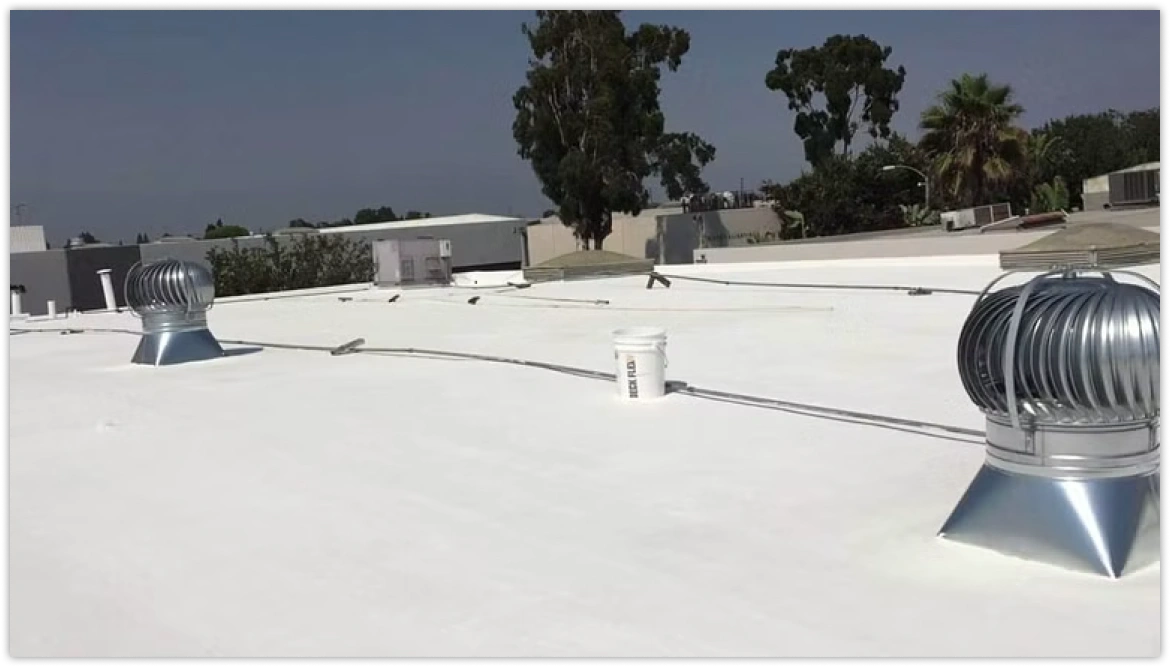
So you’ve done your researched Silicone Roof Coatings and have decided for yourself that you think they are the best spray applied or rolled roof coating available. What’s next? It’s time to learn the proper uses of silicone roof coatings.
There are two main functions and proper uses of silicone roof coatings. Both of the primary uses of silicone roof coatings involve coating over an existing roofing surface. Because silicone coatings are spray applied, they are not a standalone roofing system. They must be applied over another roofing system, and that system has often already been in place for many years. Whether it’s a new construction getting coated at the very beginning, or the building has been in existence for 50 years and its roof is leaking, silicone roof coatings can extend the roof life. Now let’s look at the uses of silicone coatings more closely.
The first use is to coat over an existing roof surface, or as we like to call it, Roof Coating Restoration. This method is used when the current roofing system on a building is wearing down, rusting, leaking, not performing well with regards to energy, or failing in some other way.
The Roof Coating Restoration steps in and puts a coating over the existing roofing surface, typically somewhere between 20-35 mils (2-3.5 sheets of paper) thick over the failing roof. This tiny layer of silicone coating then protects the roof from the elements, reflects UV rays back into the atmosphere, and can withstand ponding water. It truly is an amazing system.
This is not one of the initially intended uses of silicone roof coatings, but after silicone coatings were used on spray foam roofs, the coating was tested on other substrates and it performed exceedingly well. Since then, the Roof Coating Restoration process has become a major use of silicone roof coatings and has saved building owners millions of dollars by not having to rip out and replace their old roofing system.
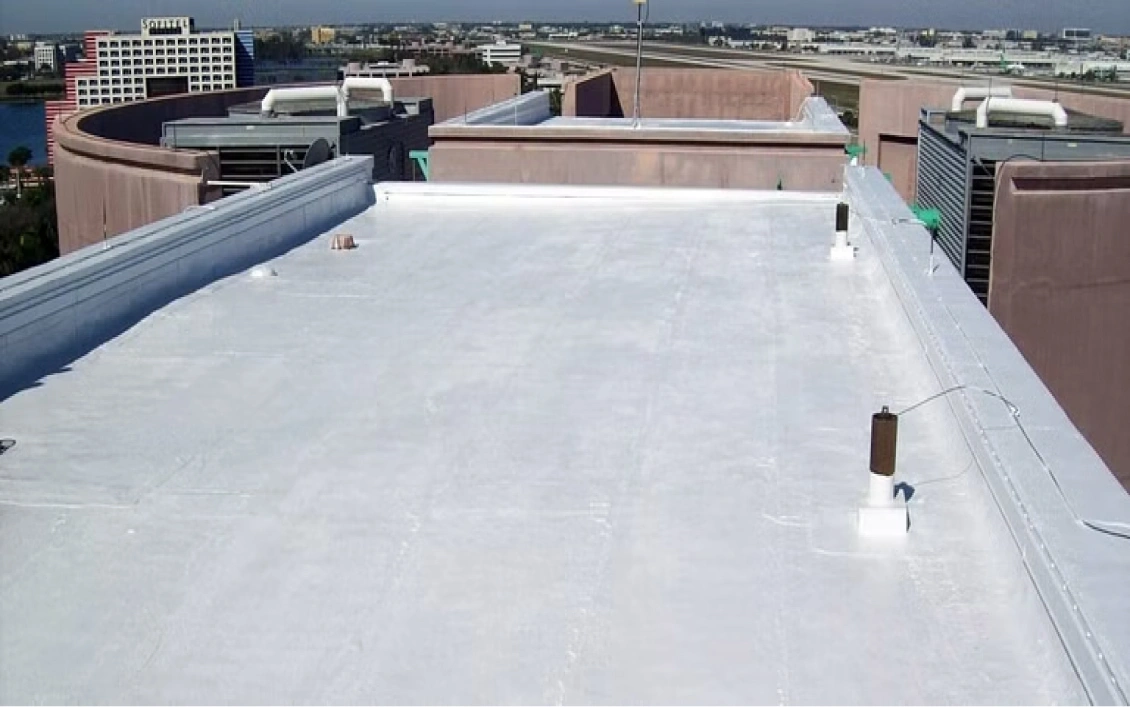





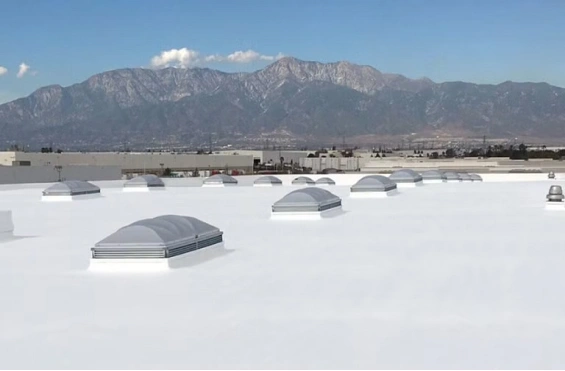
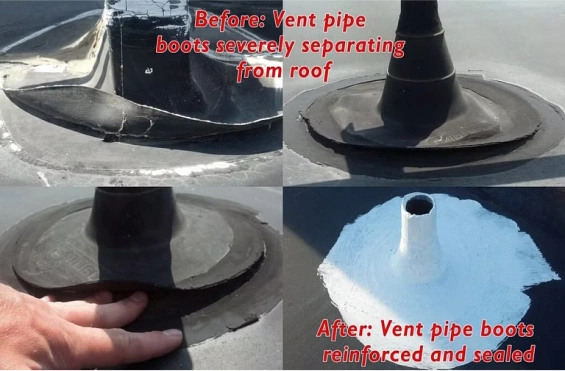
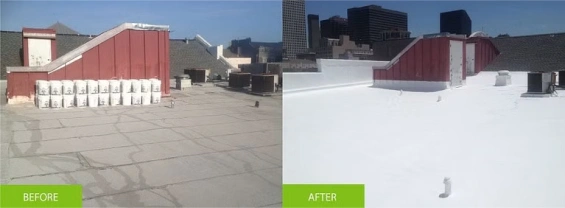
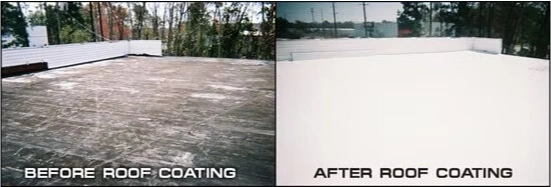
There are numerous alternatives available for low-sloped roofing, and building owners, specifiers, and managers face uncertainty in selecting the best system. Contributing to the confusion are changing government regulations, TV images of hurricane-damaged roofs, and the drive for improvements to the bottom line in the face of rising energy and labor costs. Roofing choices often come down to system economics, owner preferences, or the specifier’s experience. Often, a lack of awareness of alternative options can result in a compromised choice for the long term.
A long-term, economical roofing solution often overlooked is acrylic roof coatings. California’s Title 24 law has increased awareness of the energy-saving benefits white roof coatings offer. These coatings, applied to traditional roofing systems, comply with new regulations or help a building obtain ENERGY STAR® or LEED Green Building Rating System® certification.
Building owners and facility managers nationwide are realizing the lasting benefits of elastomeric roof coatings. These durable, liquid coatings prolong the life of the existing roof. In fact, elastomeric roof coatings have been used since the early 1980s over multiple roof types, including BUR, modified bitumen, metal, cement, and EPDM. Many white-coated roofs exist today with excellent adhesion and high solar reflectance – more than 20 years after their initial application.
An elastomeric roof coating creates a uniform, seamless surface that remains flexible even at low temperatures. It expands and contracts with changing weather conditions, protecting a roof’s surface from the sun’s damaging rays. This enables the coating to handle the continuous thermal stresses over the lifetime of the roof. Its adhesion characteristics enable the coating to remain attached to the roof in wet or extremely windy conditions. Such a coating employs technology (to resist dirt pick-up) that helps maintain energy-saving reflectance qualities, as well as a bright, clean appearance.
On existing buildings, elastomeric roof coatings do not add “dead load” or weight to the roof. The roof coating can be applied without being counted as an additional layer for code purposes. This mitigates the cost of disposal from tear-off and contributes to dollars saved by the building owner.
To ensure proper performance from an acrylic roof coating, specification ASTM D-6083 (Standard Specification for Liquid Applied Acrylic Coating Used in Roofing) was developed to define a suitable level of quality. The tests and standards are based on actual in-service performance cases of acrylic roof coatings from numerous manufacturers over various roof types, ranging in age from a few years to 20 years, on roofs located throughout the United States. Anyone using a coating that meets this standard can have confidence that the elastomeric roof coating will perform successfully when properly applied over a sound roof.
In summary, by specifying a high-performing elastomeric roof coating, building owners and facility managers can extend the life of their roofs while improving the energy efficiencies of their buildings.


We are roofing professionals that treat every home like their own. We are professionals at staying on budget, and completing projects on time.


© Team All Star Construction 2022
License Number: 1009760